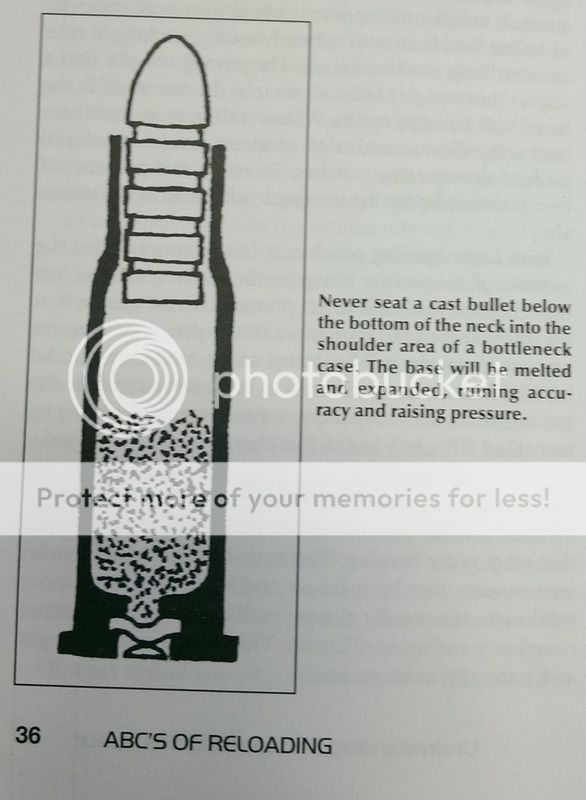Rick, not to flame, what signs would show that the base needs strengthening? I am not into high velocity and high RPM's so maybe I haven't reached that point. The fastest I have shot cast is in my .243, the 95 grain RCBS bullet. I had a load that according to the book should have been 2400 fps. According to a chronograph they were 2900 fps. With a huge amount of experience that 22 cal jacketed bullets in the right place are all that is needed for deer, I figured these pills would work great on deer. Tried them on a spike buck, not a drop of blood found and deer ran off. This was after both my grandson and I had made what should have been an easy shot on it. So I gave up on hunting with cast bullets. I know I could go to a bigger bore, but I'd have more recoil and more rainbow trajectory. I prefer the milder flat shooting and done deal right now, so I use jacketed for hunting.
I still shoot the .243 bullet, but not for hunting. One time at the range, I was shooting them without a gas check. I had shot several and looked at my bore. I was impressed enough with the shine that I had my neighbor that was also at the range take a look. I was using FWFL (felix lube) and felix always said use some of the red wax off cheese or Maker's Mark as this was carnuba and would add shine to the bore. I was getting good accuracy, no leading and no gas check.


